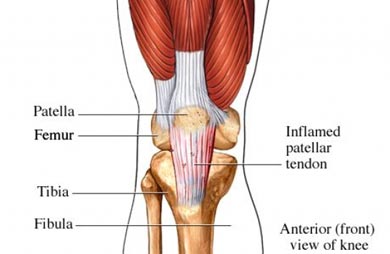
Let’s first get acquainted with the anatomy of the knee. The knee joint is made up of 3 bones essentially. The shin (tibia), the thigh (femur) and the knee cap (patella). The patella is considered a “floating” bone. It interacts with the femur and tibia via quad tendon and connective tissue. Patellar tendonitis specifically is the pain that
is felt below the patella into the tibia. There can be many different areas of knee pain for similar reasons….location typically determines the pathology.
Patellar tendonitis is easy to spot and diagnose. Patients typically report pain to touch along the tendon, knee cap pain with walking/running downward (hills, stairs), pain with kneeling on the knee, pain with jumping, running and landing. The root of the cause is the more difficult part. Typical reasons you may have patellar tendon pain are:
- Large Q angle ( larger than 20 degrees)
- Decreased strength of gluts, quad, calf
- Repetitive trauma to knee over time with poor lower extremity mechanics.
- Structural problems with the patella (patella alta, patella baja)
Treatment includes determining the root of the pain (physical therapist assessment), decreasing pain and inflammation via rest and modalities such as ice, ultrasound, and myofascial release techniques, building a specific rehabilitation program geared towards strengthening of gluts, quad, calf, improve flexibility throughout the lower extremities and assess need for external devices such as orthotics.
Patellar tendonitis is treated easily if you choose to follow the rules. If not you could be dealing with on and off knee pain for years to come. Get in to see a professional today if you have been dealing with this painful debilitating problem. Learn more about your body, your strengths, your weaknesses and your areas that need professional assessment.

